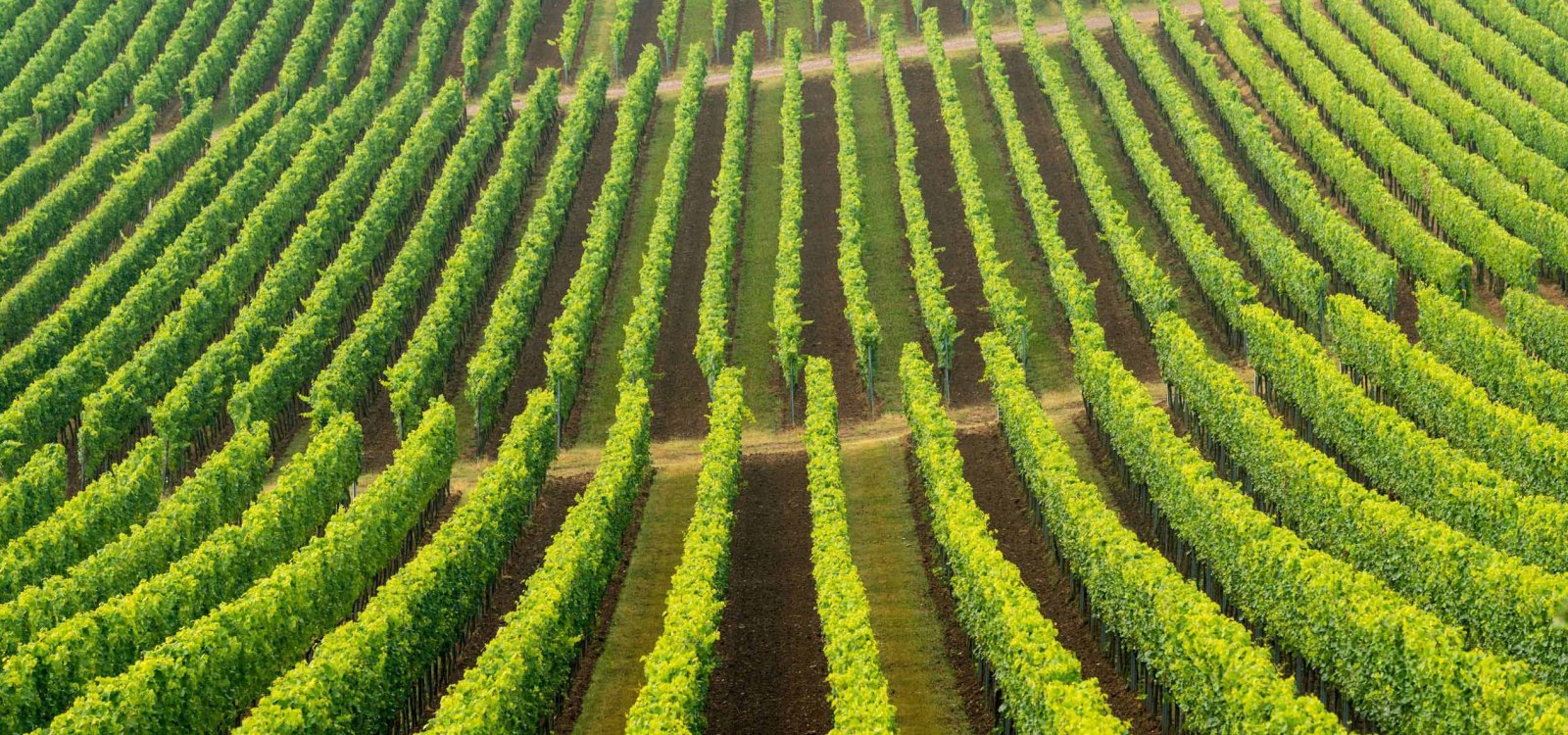
searchMenu



In a metaphorical name, this is a good vineyard location. Only rarely is such a name based on the occurrence of shiny rocks such as galena.

The location was mentioned in documents in 1297 as "westerheym" and in 1600 under the name "in westrum." The location designation retains the memory of the old farmstead of Westernheim.

Bornheimer chicken Feathered fowl? No, living hedge! Juicy corn-fed chicken with Pinot Gris or rather Mediterranean-spiced, grilled chicken drumsticks with Pinot Noir? The Burgundy varieties like to grow on loess and volcanic rock in the single vineyard "Bornheimer Hähnchen". But no, the proud fowl is not the eponym here. The Old High German "hagan" denoted a demarcated area of land. And where is the wall then? This demarcation did not have to consist of stones, but could also be enclosed with a living hedge. The Bornheimer…

The naming is based on ownership of church property.

No sweet honey, but genetically valuable mother vines. Of course there are bees in the Bubenheim honey mountain. It would be bad if not! But that once particularly many bee colonies were settled there or beekeepers were active, is unlikely. Much more likely the word "honey" could have been derived from "hunnish". "Hunnish" or also "Heunisch" refers to an old wine variety or family of varieties. In the High and Late Middle Ages, a distinction was made between "Hunnish" and Frankish vines. Yes, the Huns (meaning the Hungarians) and the Franks.…

The location was mentioned in 1403 with the name "an der kalenberge". The name is based on the dialect word "Kalle", which has its origin in the Latin "canalis" and means gutter.

Kranz family or wrath around the village? Is the single vineyard placed like a wreath (German: “Kranz”) around Dalheim? That would be a nice explanation, but unfortunately no. The site does, however, lie around one side of the village, from east to south to west. It was mentioned in a document in 1418 with the name "off dem Crausberge". It is assumed that a personal name was decisive. The various vines thrive on clay marl and loess. Incidentally, the fossil-rich sands in this area belong to the Stadecken Formation and were…

Pinot wines and sparkling wines at the Fleckenmauer The single vineyard "Bürgel" is located by the famous Fleckenmauer . The vineyard was first noted in 1286 with the name "retro montem" (Latin: retro for behind, and mons for mountain). A hundred years later, in 1358, someone wrote down "uf dem berge"(engl. “on the mountain”), which became "Bürgel". Pinot grape varieties like Pinot Gris, Blanc and Noir grow especially well here. In addition to fertile loess and marl soil, the ochre-coloured limestone "terra fusca" is…

Of hooves and limestone rocks - a Riesling prime vineyard In the past, farmers farmed their land with horses or oxen. The term "Hufe" or "Huffe" was a unit of measurement for a piece of land. In 1490, it was noted that 5 Hufen were worth 5 Mausi (a payment). The term "Hube" developed from "Hufe". In 1610, the location "am Hubacker" was mentioned in a document for the first time. Here Riesling grows on loess, clay marl and limestone rock. Expressiveness, filigree, minerality and ripeness potential at the highest level! In 2000, the Keller…

The location was 1490 to 1525 with the name "in the Sawloch" documented. Domestic or wild boars wallowed in this mud in the mud.
Rheinhessenwein e.V.
Otto-Lilienthal-Straße 4
55232 Alzey
E-Mail: info@rheinhessenwein.deRheinhessenwein e.V.
Otto-Lilienthal-Straße 4
55232 Alzey
E-Mail: info@rheinhessenwein.de